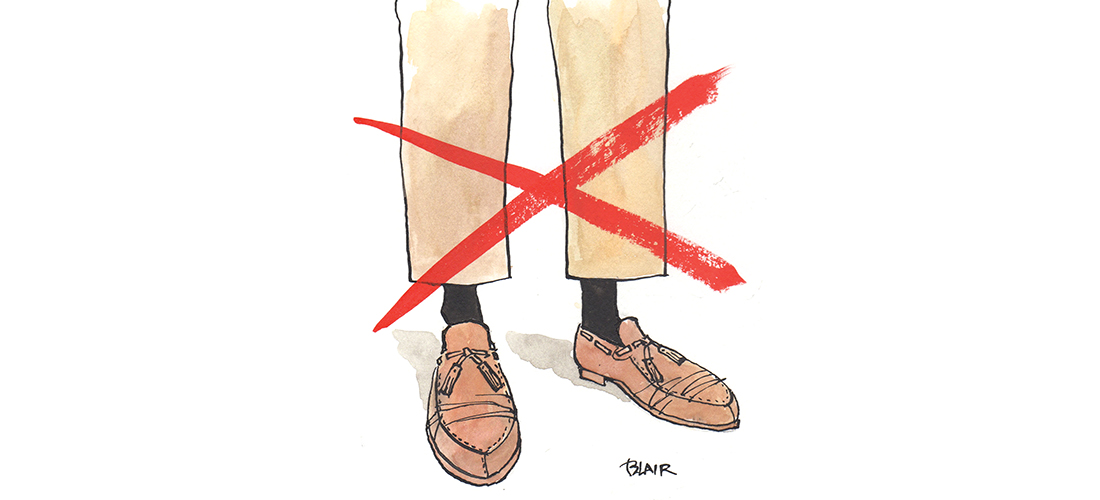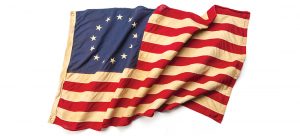
Nettleton Nightmare
The nettlesome side of “Greensboro’s Shoe”
By Charles A. Jones
When I recently noticed my accountant was wearing non-Nettleton tassel loafers, I winced. In 2012, O.Henry magazine glorified Nettletons as “The Greensboro Shoe [in] the golden age of haberdashery.”
I frankly do not understand all this bootlicking heaped upon a brand of shoes that evokes, for some, painful memories of being bullied and mocked by the fashion police in junior and senior high schools.
My time in hell was three years at Kiser from 1967–1970 and one year at Grimsley ’70–’71. The “uniform” of our generation’s equivalent of the Hitler Youth (aka “Brownshirts”) was a pair of Nettletons, black socks, and often an Izod shirt featuring, appropriately, a vicious alligator. Penny loafers were allowed as an alternative to Nettletons but never with pennies in the slots at the front of the loafers — unless you had a death wish. Such fashion deviations brought instant and brutal punishment by the Brownshirts. Another taboo: wearing “fake Nettletons”
But not everyone who sported Nettletons was a bully. I remember a good guy from the Kiser years whom I will call John Brandt, who wore the prized loafers. When a bully stepped on the tip of his Nettleton and turned his foot to grind the shoe’s toe, John hit the guy in the face the very next day at his father’s suggestion and dragged the bleeding offender to the principal’s office.
My parents for whatever reason would not let me buy Nettletons. My feet were also too big and too wide for the shiny penny loafers (which my parents did allow) flattening the inside edges of the shoes.
Another fashion offense that put me in harm’s way was donning a pair of white or light colored socks, a lightning rod that drew instant fire. I remember a dangerous duo — let’s call them Lane Smith and Paul Downing, who were both Nettleton-wearers — seeing me commit just such a fashion offense. Rocking back and forth on their feet, they mocked me by sarcastically singing “We like those WHITE SOCKS!” Lane once expressed his disapproval of me by spitting on me through the gap in his front teeth. Once, when the bottoms of my feet were badly cut and I had to wear white socks, I covered them with a pair of dark ones so I would live another day.
Nettletons or “Neds” as they were called, became meaningless after I left Greensboro’s public schools. At Oak Ridge Military Academy, Wake Forest University and Campbell College Law School, one’s academic performance and character were much more important than a shoe brand.
In 1981 I joined the Marines and never had to worry about what to wear — and I didn’t have to go to Younts-DeBoe and spend a week’s pay on a pair of shoes. For field duty, the uniform was “boots and utes” — combat boots and a standard utility uniform (camouflage). I became elite based on merit, not on footwear.
Ironically, shoe problems still haunted me during my initial Marine training. My wide, flat feet didn’t fit comfortably inside narrow combat boots with little support. What were benignly termed “conditioning hikes” were in fact long marches on gravel roads (a great way to see Virginia’s countryside while wearing a helmet and pack, and carrying a rifle). My feet began to look like bleeding hamburgers. I tried everything for relief, including wearing hose and — get this — white socks. The only relief came when I got wider boots.
Civilian clothing was permitted after hours, but fellow Marines, despite their regimented training and esprit de corps, never ragged anyone for wearing faux Nettletons or white socks. I doubt they even knew what Nettletons were. I realized that high school was over and that mature adults do not really care what shoes or socks one wears as long as one is a competent, humane individual.
Despite the very strong signal I got from the beautiful people and show-offs that I was CLEARLY not one of them, I have led a successful and fulfilling life to age 64. And I will never be nostalgic about a status symbol that symbolized, at least for me, the cruelty that insecure adolescents are capable of inflicting upon one another.
Without fear I wear white socks as I write and edit this article, and I — who still have the fire of a Marine — look forward to meeting Lane Smith and Paul Downing one day to revisit the good old times and maybe even using the end of my fist to point their chins to their “Neds.”
Charles A. Jones is a retired Marine Corps Reserve colonel, a lawyer and a writer. He changed the names of those mentioned in this article to protect the guilty.





